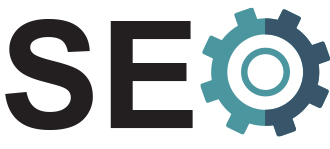November 11, 2014 | Sales and Marketing
How Search Engine Optimization Drives Qualified Leads (Part 5 of 8)
Note: this entry is part of a series about using marketing to generate leads and enhance brand awareness. See our Sales & Marketing topic.
Imagine you have the greatest store in the world and you're selling a unique product or services. However, your store is located in the middle of the forrest....

Imagine you have the greatest store in the world and you’re selling a unique product or service. Your facility is beautiful and your staff is welcoming and friendly. However, your store is located in the middle of the forest and there is literally no road, path, river or any method of transportation for someone to reach your store. Furthermore, you have no doorway or windows to get into you store. It kind of defeats the purpose of having a store, right?
Having a website without a Search Engine Optimization (SEO) strategy is like having a store with no entrance.
You invest a lot of resources into making a good website. You may have worked internally or with an agency on the design and content. You’ve selected graphics and the color scheme, along with some copy. But this still isn’t enough to make a successful website.
You have to get found by your potential targets - and that’s where SEO comes in. The practice of SEO is using techniques to help your website get found and rank higher on search engine sites like Google, Bing and Yahoo.
In today’s society where people are dependent on technology, getting found by Google is critical to your online marketing strategy. As an exercise, jot down on a piece of paper every time you have a question or need more information on a topic. After that, make a mark in blue for every time you use Google (or comparable search engine) as your go-to tool to answer your question or find your info. Our guess is that you’re going to see a lot of blue on your paper.
Your target audience is no different. When your prospects are typing in key terms and phrases in search engines, you want your website to rank higher than your competitor’s.
While SEO is very technical and a long-term project, here is an SEO 101 run-down of some key factors:
- Content: The words you use on your pages will help determine if your website gets founds. For example, if you want to get found for the phrase “purple widgets,” the term “purple widgets” should appear in the copy of your website.
- Indexed Pages: Indexed pages refers to the number of pages of your website that have the ability to get found by search engines. Does your website have 4 pages or 75 pages? While quality is more important than quantity, having a robust website filled with multiple pages of content and information can help you get found more.
- Inbound Links: When other quality websites link back to your website, it’s called an inbound link. A lot of inbound links boost your ranking.
- Page Titles: Visit a website and look at the blue bar or tab at the top of your screen. There is “real estate” here for keywords that tell search engines what you’re page is about.
- Meta Information: There are “behind the page” words and phrases that are programmed along with your pages. They also provide you with an opportunity to tell Google about your pages.
Please note: search engines alter the factors that impact your ranking. The aforementioned factors are meant to provide you with an introductory understanding of SEO.
Want to learn more about SEO? Leave a comment and we’ll explore a particular topic in a future blog entry!
In Part 6 of the series, we’ll explore E-mail Marketing!

